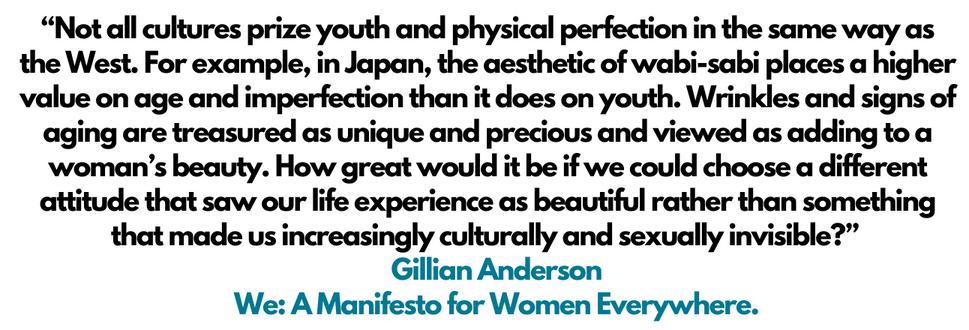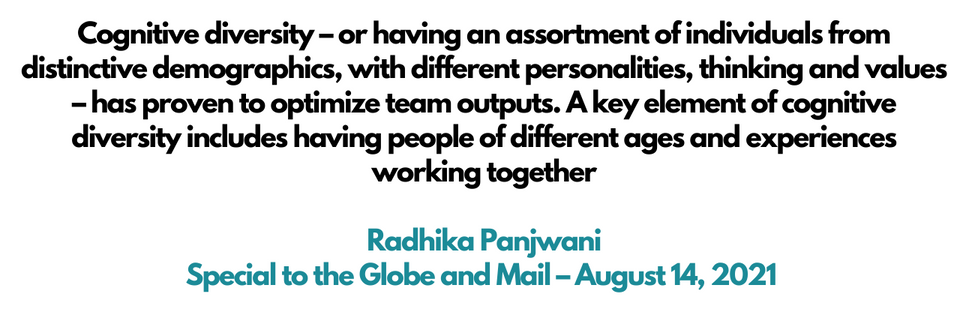Feeling invisible at work is driving women to quit
Jun 29, 2022
For many years the word I have heard most used by women in midlife and older to describe themselves is “invisible.” Invisible seems to be a catch-all term for how many women feel they are viewed in the workplace and, more generally, in day-to-day life. Because I wanted to know if this was more than just a phenomenon showing up on my radar, I decided to do a search of popular (and scientific) literature. I was surprised to find that even a simple Google search of “invisible and midlife women” returned thousands of hits. Searching peer-reviewed scientific articles revealed almost 200 studies on this topic.
There seems to be a disconnect; most women in the top positions of power worldwide are over the age of 40. Many women in leadership roles are also over the age of 40. Why is one of the most experienced and accomplished groups of women feeling so invisible?
The reality is that invisibility is fueled by gendered ageism. Undeniably, the West worships youth culture, and systemic ageism is baked into our institutions and language. This is the only explanation, for example, of why companies can make a massive profit by selling beauty products that use the word “anti” along with what’s happening to all of us from birth onwards. What anti-aging truly reinforces is that after a certain age women have to fight against being perceived as belonging to a group who are less seen in society.

Aging is a gift denied to many. Those who have made it to their midlife or older years have likely had a mix (or all) of the following: a few serious relationships, reached a level of competency or success in their career, maybe had a child or two (or not), been a caregiver, buried someone important in their life, had a challenging health issue, and have overcome some type of adversity. Many have had several of those things happen at the same time. All of these experiences contribute to knowledge, wisdom, and in many cases, the ability to be a good leader.
If we fail to support and recognize older women at work, we are far less likely to pass on a world with more gender equality, keep important mentors, and value the importance of institutional knowledge. So how can companies work to reduce this feeling of female invisibility in the workplace and what can women do personally?
Here are five ways to join the movement to make a change:
1. Workplaces can audit their age-related policies and practices. For example, even during the current labour shortage, employers are less likely to hire applicants who are over 50, even when the company is committed to diversity, equity and inclusion; only a limited number of companies address ageism in their DEI policies. Consider that 78 percent of older workers have witnessed or have been targets of age bias at work. Adopting age-friendly policies and practices ultimately creates many universal changes that can benefit those of all ages.
2. Leaders can champion raising awareness of intergenerational advantage. Having a mix of employees from different age groups can strengthen outputs at work. Creating intergenerational work groups can offer complementary skills, experience, and training. Leaders who normalize and champion age diversity are critical.

4. Organizations can recognize, reward, and leverage the mentorship power of women. Many women report feeling like their options to advance in their career decline sharply over the age of 40. In a recent survey by Deloitte, 64% of female leaders in middle management reported that they plan to leave their current employer in the next two years. The number one reason women left their former employer, and one of the top three reasons they plan to leave their current employer, is lack of advancement opportunities. Companies lose essential mentors and role models when women in leadership quit.
And finally…
5. We can ignore the anti-aging movement. I personally prefer aging to the alternative. Let’s face it, anti-aging is anti-older women. Let's think twice about buying products with the anti-aging label.
As the population ages, so does the workforce. The percentage of working-age Canadians over 55 is projected to reach 40% by 2026. By that same year, one-third of new hires are projected to be women who are 55 or older.
Let’s ensure that we support age diversity and reduce gendered ageism at work by making older women employees feel valuable, supported, and most importantly, visible.
Get Your Free Copy of Managing in Midlife
Discover how to better support, engage, and retain midlife and older women in the workplace. This insightful whitepaper will help you build a more age-inclusive organization—and foster a culture where all generations thrive.
Plus, stay updated with the latest news, blog posts, and insights from Cardea.
We hate SPAM. We will never sell your information, for any reason.

